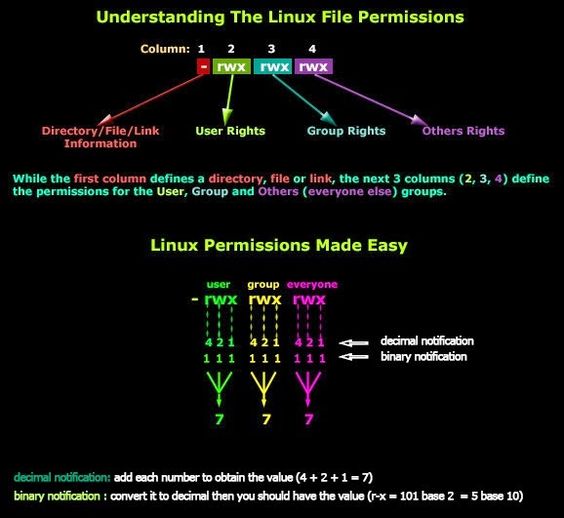Basics Of Linux File Permissions: Understanding Chmod And Chown

Executive Summary

Linux file permissions are essential for controlling access to files and directories on a Linux system. They define who can read, write, and execute files and directories, and are an important part of maintaining the security of a system. This article provides a comprehensive overview of Linux file permissions, including how to use the chmod and chown commands to modify them.

Introduction
Every file and directory in a Linux system has a set of permissions that determine who can access it and what they can do with it. These permissions are specified using a three-character code, which represents the permissions for the owner of the file, the group that owns the file, and others.
The first character in the code represents the permissions for the owner of the file. The second character represents the permissions for the group that owns the file, and the third character represents the permissions for others.
Each character in the code can be either a letter or a number. The letters represent the following permissions:
- r – Read permission
- w – Write permission
- x – Execute permission
The numbers represent the following permissions:
- 0 – No permission
- 1 – Execute permission
- 2 – Write permission
- 3 – Write and execute permission
- 4 – Read permission
- 5 – Read and execute permission
- 6 – Read and write permission
- 7 – Read, write, and execute permission
chmod
The chmod command is used to change the permissions of a file or directory. The syntax of the chmod command is as follows:
chmod <permissions> <file or directory>The permissions parameter is a three-character code that represents the new permissions for the file or directory.
chown
The chown command is used to change the owner or group of a file or directory. The syntax of the chown command is as follows:
chown <new owner> <file or directory>The new owner parameter is the name of the new owner of the file or directory.
Important Pieces of Linux File Permissions
- File Access Control
Linux emphasizes the significance of file access control to safeguard system resources. Setting up appropriate file permissions ensures that only authorized users can access sensitive information or execute crucial commands, preventing unauthorized tampering and maintaining data integrity.
- User, Group, and Other Permissions
Linux categorizes users into three classes: the file owner, group members, and others. Each category is assigned a specific set of permissions: read, write, and execute. Understanding these permissions is crucial for controlling file accessibility and preventing security breaches.
- chmod Command
The chmod command is a powerful tool for modifying file and directory permissions. By specifying the desired permissions using a three-character string, you can grant or revoke read, write, and execute privileges to specific users or groups. It’s essential to use chmod cautiously to avoid compromising system security.
- chown Command
The chown command provides the ability to change the ownership of a file or directory. Assigning the correct ownership ensures that authorized users have the necessary permissions to access and modify files, while restricting unauthorized individuals from making changes. Proper ownership management is vital for maintaining data integrity and preventing unauthorized access.
- Numeric and Symbolic Permission Representation
Linux offers two methods to represent file permissions: numeric and symbolic. Numeric permissions use numbers (0-7) to denote specific access levels, while symbolic permissions employ letters (r, w, x) to represent read, write, and execute permissions. Understanding both formats is essential for effective permission management.
Conclusion
Linux file permissions are an essential part of maintaining the security and integrity of a Linux system. By understanding how to use the chmod and chown commands, you can effectively control access to files and directories, and protect your system from unauthorized access.
Keyword Phrase Tags
- Linux file permissions
- chmod
- chown
- file access control
- security

Thnx 4 the info! I’ll b sure 2 check it out.
I’m not so sure about this. It seems like a lot of work for something that doesn’t seem to have much benefit.
This is a great explanation of file permissions in Linux. I’ve been using Linux for years, but I still learned a few new things.
I disagree with your assessment of the benefits of file permissions. I believe that they are essential for maintaining security and privacy on a Linux system.
It’s funny how the most important thing about file permissions is understanding how to change them. It’s like a paradox.
Oh, great. Another complex and confusing topic that I have to learn in order to use Linux. Thanks a lot.
I’m not sure what’s more confusing: file permissions or the Linux kernel. They’re both like trying to decipher a secret code.
I’ve been using Linux for years, and I’ve never had to worry about file permissions. Maybe I’m just lucky?
I’m so confused. Can someone please explain this in simpler terms?
This is exactly what I needed! I’ve been trying to figure out how to change file permissions for ages.
I think that file permissions are too complicated. They should be simplified so that everyone can understand them.
File permissions are like a secret handshake for computers. Only the cool kids know how to use them.
I wonder if there’s a way to automate this process. It would save me a lot of time.